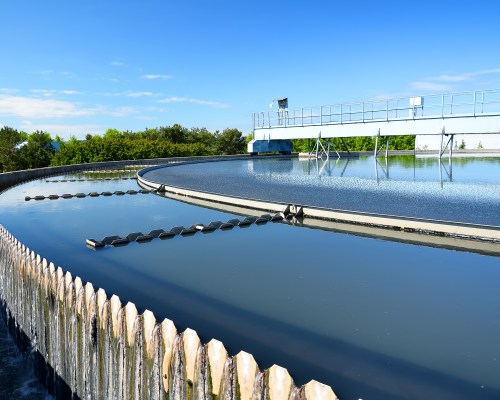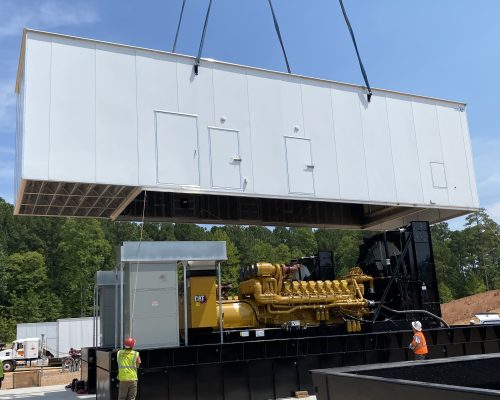Replacing Orlando’s Aging Water Treatment Energy Infrastructure with Guy Mecabe
Orlando, Florida, is among the fastest-growing cities in the U.S. According to March 2024 Census Bureau estimates, Orlando’s population expanded 2.7%. This surpassed Florida’s 2% rate and led growth among the nation’s 30 largest metro areas.
Treating the approximately 45 million gallons of wastewater per day for those residents plus the nearly 75 million annual visitors to Orlando is the job of the Water Reclamation Division. This group of around 250 employees operates three reclamation facilities and ensures the complex, biological process of treating raw sewage is completed safely and efficiently.
Completing the complicated processes needed to serve a footprint that large requires a great deal of automation. To achieve this, Orlando Public Works employs an in-house team known as the Industrial Automation Group. This group, led by Guy Mecabe, is responsible for everything necessary to fully automate wastewater treatment processes and achieve outcomes with minimum human input. This also includes the electrical and mechanical infrastructure needed for automation programming and facility processes.
With a very bespoke backup resiliency system nearing its end of life, the city of Orlando’s Water Reclamation Division began searching for a provider that could deliver a reliable, industry-standard solution and take on the burden of maintenance and repairs. That’s where Duke Energy One Energy Services came in.
In this interview, Guy Mecabe, industrial automation manager for the Water Reclamation Division in the city of Orlando, explains why it was time to replace the existing backup generator system, why Orlando chose Duke Energy One for the project and how the as-a-service model allowed the Water Reclamation Division to remain focused on its mission – providing a critical public service.
Why did the city of Orlando begin evaluating replacing the backup power system at Iron Bridge?
Guy Mecabe (GM): The original design for the backup power system here was originally installed in 2007. And it was more focused on features than maintainability. The system was over-automated. Too many of the features were put inside of a PLC rather than using actually industry-standard devices to perform those functions. So it became a very complex automated system.
We also installed 2.8-megawatt (12.47-kilovolt) generators as opposed to several smaller 480-volt generators. So maintaining those larger generators is certainly a burden.
We also have to deal with single service providers because of proprietary software, and then the maintenance costs just became outrageous. That led us to start looking and seeing what options were out there.
What was the most pressing issue when evaluating the backup power system?
GM: The most pressing thing for us is knowledge transfer. We have kind of an aging staff, and we’re also in sort of a technical tradesman drought. So it’s very difficult to find new electricians to come in and take the reins from the older guys so as they retire out. We’re going to be left with this really complex system that nobody really knows how to operate. So that’s been a real issue for us as we look for a new system.
Phase one of Iron Bridge came online in 1982, and then that was quickly followed up by phase two in 1989 and phase three in 1991 when the plant was fully commissioned. So it’s been around for quite a long time. Many of the systems have been upgraded, so there’s very little that’s still original. The medium voltage and the generators, power distribution – that was all replaced in 2007, and then our 480-volt infrastructure was replaced in 2021. So we’re really electrically down to just anything below 480 [volts], and we replace that as needed.
There’s always something to fix at Iron Bridge. It’s also such a complex system. There are so many moving parts that operate 24/7/365. We never shut down, so that adds to the burden.
With a normal factory, when production goes down, you lose money or revenues. With a wastewater treatment plant, when you go down, it becomes an environmental public health risk. So that leads to a lot of repairs being completed as an emergency, which also adds to the cost of it.
Why did Orlando ultimately decide to replace its backup power system at Iron Bridge?
GM: With a system that’s built on hardware and software, we know that those things don’t last for 30 or 40 years anymore. So it comes a point in time where things are outdated, and they just need to be replaced. We try to take more of a proactive stance with maintenance rather than reactive. With (the system) aging, and we know that it’s aging, we want to go ahead and take steps to get it replaced.
So many of the components used in the system are no longer manufactured, and we’re finding ourselves now looking for surplus or refurbished equipment as well. So that definitely lends to the fact that it’s time to replace it.
What did Orlando’s water reclamation group want in their new backup power system?
GM: Definitely a more industry-standard system that’s easier for us to maintain, easier for service providers to recognize. Our current system, as I mentioned, was very custom. So we had a lot of training in-house for our technicians. But in addition, the service providers that would come out, they’d never seen a system like this before. So it took them time to learn it. We didn’t have really highly skilled service providers for it. So we’re definitely looking for something more industry standard.
Why did the city of Orlando choose Duke Energy One Energy Services?
GM: We did a lot of research, and reputation speaks for itself.
Every time we spoke to the project management team at Duke Energy One, we gained more trust as a result of their confidence and experience. We really gave them a tough interview. We also wanted to see the system in action and talk to customers who have used the system. And Duke Energy One welcomed that approach. They were very transparent.
What did Orlando like about the energy-infrastructure-as-a-service model?
GM: The power-as-a-service for us really means just hands off. For us, it’s almost as if we have two utility power feeds. That’s before our infrastructure. So we still have the same level of redundancy, but now we have experts who are solely focused on the maintenance of emergency power generation equipment. Our focus is making clean water, and it’s really not in generating power. That’s not our area of expertise.
What was attractive for us is that we can get back to treating water and let the power experts focus on the power generation aspect of it.
What role does maintenance play in the consideration of installing a new backup power system for a city like Orlando?
GM: There are so many different systems made by so many different manufacturers that our employees can’t possibly know it all.
And having a trusted partnership is crucial to any successful organization. The plant really never sleeps. The equipment needs to last and perform for the entire life cycle. And a lack of maintenance is not going to allow that to happen. As I said before, our goal with maintenance is to be proactive and not reactive. And proper maintenance is the key to that.
What are the benefits of energy-infrastructure-as-a-service for municipalities?
GM: I think it’s just like I said, maintaining water is our primary objective, and I think that they’re going to see the same. I think anytime that they can get back to doing what it is that they do and not having to worry about the power and the generators and things that they’re not familiar with, I think they’re going to leap at the opportunity.
Focus on providing critical public services and leave the electrical infrastructure to us
Aging electrical infrastructure and backup generators are a risk for municipalities across the country. With limited budgets, these systems can be a financial burden to replace. Plus, many of the in-house technicians and engineers servicing these systems are also aging into retirement. The more time that local governments spend responding to ongoing maintenance and repair needs, the less time is spent focusing on providing critical services that citizens rely on.
Duke Energy One Energy Services provides water treatment departments and other public utility providers with the best of both worlds when it comes to resiliency systems and electrical infrastructure. Energy Services delivers best-in-class electrical systems and maintenance within a financing structure built to meet the needs of municipal budgets. There’s no need to sacrifice quality or budgetary flexibility.
Check out the full interview with Guy Mecabe to learn more about why Orlando’s water reclamation department chose Duke Energy One for its resiliency improvements at the Iron Bridge Regional Water Reclamation Facility. And contact us to find out more about how we can help ensure your water facilities remain ready when unexpected power outages occur.



